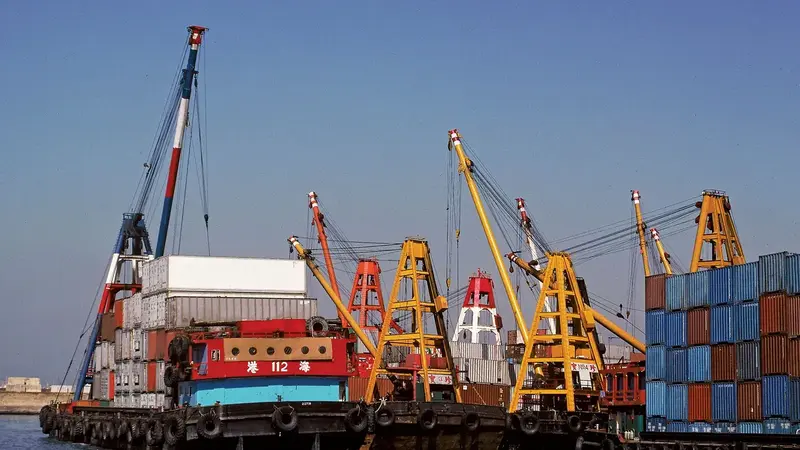Efficient cargo handling is crucial for smooth logistics operations and streamlined supply chains. Loading and unloading processes play a vital role in ensuring the safe and timely movement of goods. In this blog post, we will explore some efficient cargo handling techniques for loading and unloading, highlighting their significance in optimizing logistics and enhancing overall operational efficiency.
Importance of Efficient Cargo Handling
Efficient cargo handling offers several benefits to businesses involved in transportation and logistics:
- Time and Cost Savings: Streamlined loading and unloading processes minimize delays and reduce idle time, optimizing resource utilization and saving costs associated with extended wait times.
- Improved Safety: Efficient cargo handling techniques prioritize safety, reducing the risk of accidents, injuries, and damage to goods. Proper equipment usage and standardized procedures enhance workplace safety for personnel involved in loading and unloading operations.
- Enhanced Customer Satisfaction: Efficient cargo handling ensures prompt delivery and reduces the chances of damage or mishandling of goods during loading and unloading. This leads to improved customer satisfaction and strengthens business relationships.
- Increased Productivity: Effective cargo handling techniques increase productivity by reducing manual labor requirements and improving workflow efficiency. This allows for quicker turnaround times and increased throughput.
Loading Techniques
Efficient loading techniques maximize space utilization and ensure proper distribution of weight for safe transportation:
- Stacking and Securing: Stacking goods in a stable and secure manner is critical to utilizing available space efficiently. Proper stacking techniques, such as interlocking boxes or using pallets, prevent shifting and damage during transit. Securing loads with straps, bands, or stretch wrap further enhances stability.
- FIFO (First-In, First-Out) Principle: FIFO loading ensures that goods with the earliest expiration dates or shortest shelf life are placed in accessible positions, allowing for easy retrieval and minimizing waste.
- Load Balancing: Distributing weight evenly throughout the cargo area helps maintain stability during transportation. Balancing heavy items with lighter ones and positioning them properly within the vehicle ensures safe handling and prevents overloading or tipping.
- Packing Optimization: Optimizing packing configurations based on product dimensions and fragility reduces wasted space and maximizes the number of items that can be transported in a single trip. This minimizes fuel consumption and transportation costs.
- Crane Service: Utilizing crane services for loading operations can significantly enhance efficiency, particularly when dealing with heavy or oversized cargo. Cranes can quickly and safely hoist large items onto the vehicle, reducing manual labor and minimizing potential damage.
Unloading Techniques
Efficient unloading techniques expedite the process and reduce unnecessary handling:
- Proper Equipment Usage: Utilizing appropriate equipment, such as forklifts, cranes, or pallet jacks, streamlines the unloading process and reduces manual labor. Using specialized equipment designed for specific types of cargo ensures safe and efficient handling.
- Docking Procedures: Establishing organized docking procedures and clear communication channels between the loading dock personnel and drivers facilitates smooth unloading operations. Efficient coordination helps minimize wait times and expedites the unloading process.
- Unloading Zones: Designating specific unloading zones based on product type, size, or destination allows for easier sorting and segregation of goods. This minimizes confusion and reduces the chances of misplaced or damaged items.
- Real-Time Inventory Management: Implementing real-time inventory tracking systems enables efficient unloading by providing accurate information about the location and quantity of unloaded goods. This streamlines subsequent processes, such as sorting, warehousing, or further distribution.
Automation and Technology
Advancements in automation and technology have revolutionized cargo handling, improving efficiency and reducing reliance on manual labor:
- Automated Systems: Robotic systems and conveyor belts automate the loading and unloading processes, reducing human error, and increasing speed and accuracy. Automated systems can handle heavy loads, navigate tight spaces, and adapt to changing conditions.
- RFID (Radio Frequency Identification): RFID technology allows for efficient tracking and identification of goods throughout the supply chain. This facilitates automated inventory management, reducing the time required for manual checks and improving overall logistics efficiency.
- Barcode Scanning: Barcode scanning systems ensure accurate tracking, inventory control, and streamlined documentation during loading and unloading. Scanners can quickly read barcodes on packages, improving data accuracy and expediting processes.
- Predictive Analytics: Utilizing predictive analytics and machine learning algorithms enhances cargo handling by optimizing routes, predicting transportation needs, and identifying potential bottlenecks. This enables proactive decision-making and enhances overall operational efficiency.
Efficient cargo handling techniques for loading and unloading are essential for achieving optimal logistics performance. By implementing these techniques and leveraging automation and technology, businesses can improve productivity, reduce costs, and enhance customer satisfaction. Efficient cargo handling not only ensures safe transportation but also contributes to the overall success of supply chain management.
